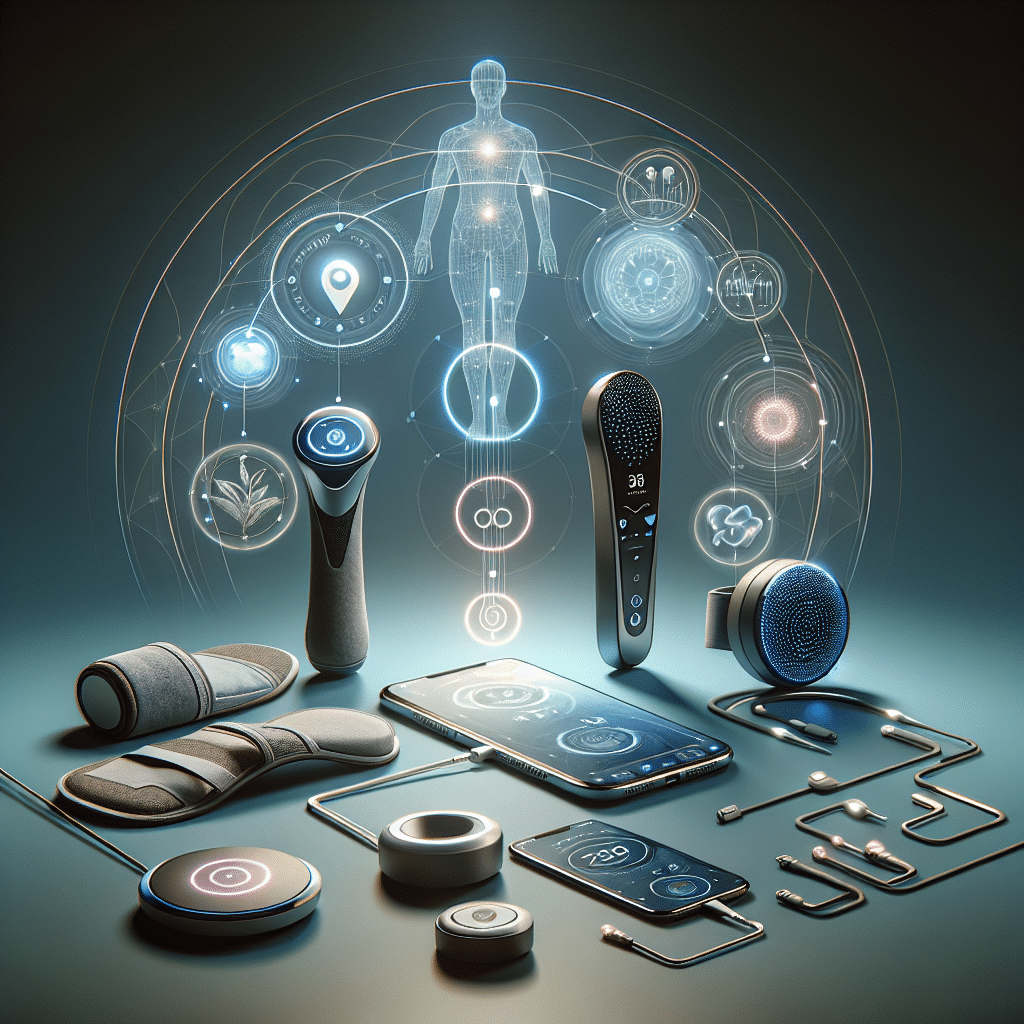Understanding Restless Legs Syndrome (RLS)
Restless Legs Syndrome (RLS) is a neurological condition that creates an uncontrollable urge to move one’s legs. This typically results in uncomfortable sensations, particularly in the evening or at night. Various smart gadgets and devices can help ease the symptoms of RLS by promoting relaxation, improving sleep quality, and enhancing overall comfort.
Smart Wearable Technology
- Sleep Trackers
Modern sleep trackers, such as the Fitbit series or Oura Ring, offer insights into your sleep quality and patterns. They help identify disturbances related to RLS and allow users to monitor their sleep stages. Features typically include heart rate monitoring, movement detection, and sleep quality scores. By assessing sleep patterns, users can make informed lifestyle changes or seek medical advice when necessary.
- Smart Compression Socks
Compression socks, such as the Physix Gear Sport Compression Socks, are designed to improve blood circulation in the legs. Smart variants come with integrated technology that helps track blood flow and temperature, adjusting compression based on body movements. This enhanced blood circulation can alleviate the uncomfortable sensations associated with RLS by keeping the legs energized.
Smart Home Devices
- Smart Mattresses
A smart mattress, like the Sleep Number bed, can automatically adjust to your body’s movements and provide optimal support. Some models offer temperature control features, which can be particularly beneficial for RLS sufferers. By maintaining a cool environment for the legs, these mattresses can help in reducing discomfort and allowing for uninterrupted sleep during the night.
- Adjustable Bed Frames
These smart bed frames allow users to elevate their legs or adjust the incline for greater comfort. Some models are equipped with massage functions to soothe tense muscles and promote relaxation. The ability to customize sleeping positions can significantly ease RLS symptoms by allowing the legs to rest comfortably throughout the night.
Smart Pillows
Smart pillows, such as the ZEEQ Smart Pillow, combine technology with comfort. These pillows often feature built-in speakers, allowing users to listen to soothing sounds or white noise to help relax prior to sleep. Additionally, some models have sleep tracking capabilities, letting users monitor their sleep quality while providing adequate support for the head and neck, indirectly benefiting the legs.
Foot Massagers
- Electronic Foot Massagers
Investing in a smart foot massager can be a game-changer for those suffering from RLS. Devices like the Miko Shiatsu Foot Massager provide deep kneading and vibration therapy to relieve tension and improve blood circulation in the feet and legs. Many models offer customizable settings for intensity and heat, tailoring the massage experience based on individual preferences.
- Leg Compressors
Leg compression therapy devices, such as the ComfySure Leg Air Massager, use air pressure to provide a gentle squeezing action that promotes circulation. These leg compressors work on the principle of sequential compression, which can be especially soothing for RLS symptoms. Users can control the intensity and duration of the treatment, allowing for a personalized experience.
Mobile Applications
- Sleep Improvement Apps
Apps specifically designed for sleep improvement, like Sleep Cycle or Calm, can also help with RLS. These applications provide guided meditations, soothing sounds, and relaxation techniques to prepare the body for restful sleep. Users can customize their experience based on what helps them the most, be it ambient soundscapes or gentle breathing exercises.
- Fitness and Activity Trackers
Keeping active is crucial for managing RLS. Fitness apps, such as MyFitnessPal or Strava, can help track daily physical activity, ensuring that users maintain a healthy lifestyle. Regular moderate exercise is often recommended for RLS sufferers, and tracking activity levels can provide motivation and insights into how physical health impacts RLS symptoms.
Environmental Control Devices
- Smart Thermostats
Environmental factors such as temperature can affect the severity of RLS symptoms. Smart thermostats, such as the Nest Learning Thermostat, can create a comfortable sleep environment by automatically adjusting the temperature. A cooler room may contribute to better sleep quality, which is essential for those dealing with RLS.
- Smart Humidifiers
Maintaining proper humidity levels can also support better sleep quality. Smart humidifiers, like those from Levoit, can monitor and adjust humidity levels automatically. Dry air can exacerbate discomfort, and a humidifier can help alleviate that sensation, promoting overall relaxation in the legs.
Light Therapy Devices
Light therapy can help regulate circadian rhythms, which is important for sleep quality. Devices such as the Philips Wake-Up Light Alarm Clock simulate natural sunlight, gradually brightening to wake you gently. This process helps align sleep-wake cycles and can lead to improved sleep patterns, thereby potentially reducing RLS symptoms.
Ergonomic Furniture
Investing in ergonomic furniture can also enhance comfort and help manage RLS. Standing desks, supportive chairs, and even specialized leg rests can improve posture and reduce discomfort during prolonged sitting. These furniture options allow for movement and circulation, critical elements in managing symptoms effectively.
Breathing and Relaxation Tools
- Smart Breath Monitors
Devices like the Spire Stone help users practice mindful breathing techniques. Breathing exercises can significantly reduce tension in the body and soothe RLS symptoms. By tracking breath patterns and reminding users to take deep breaths, these devices promote mental relaxation and physical comfort.
- Meditation Tools
Meditation and mindfulness apps, combined with smart speakers like Amazon Echo or Google Nest Hub, can guide users through relaxation exercises that focus on leg relaxation. Engaging in deep meditation can help RLS sufferers manage their symptoms by shifting focus and alleviating anxiety.
Conclusion
Smart gadgets can play a vital role in managing Restless Legs Syndrome. Through wearable technology, smart home devices, and various relaxation tools, individuals can find personalized solutions to their symptoms. By incorporating these gadgets into daily routines, those who experience RLS can improve their comfort levels and enhance their overall quality of life. Adopting these innovations not only aids in immediate relief but also contributes to long-term management strategies for those affected by RLS.
